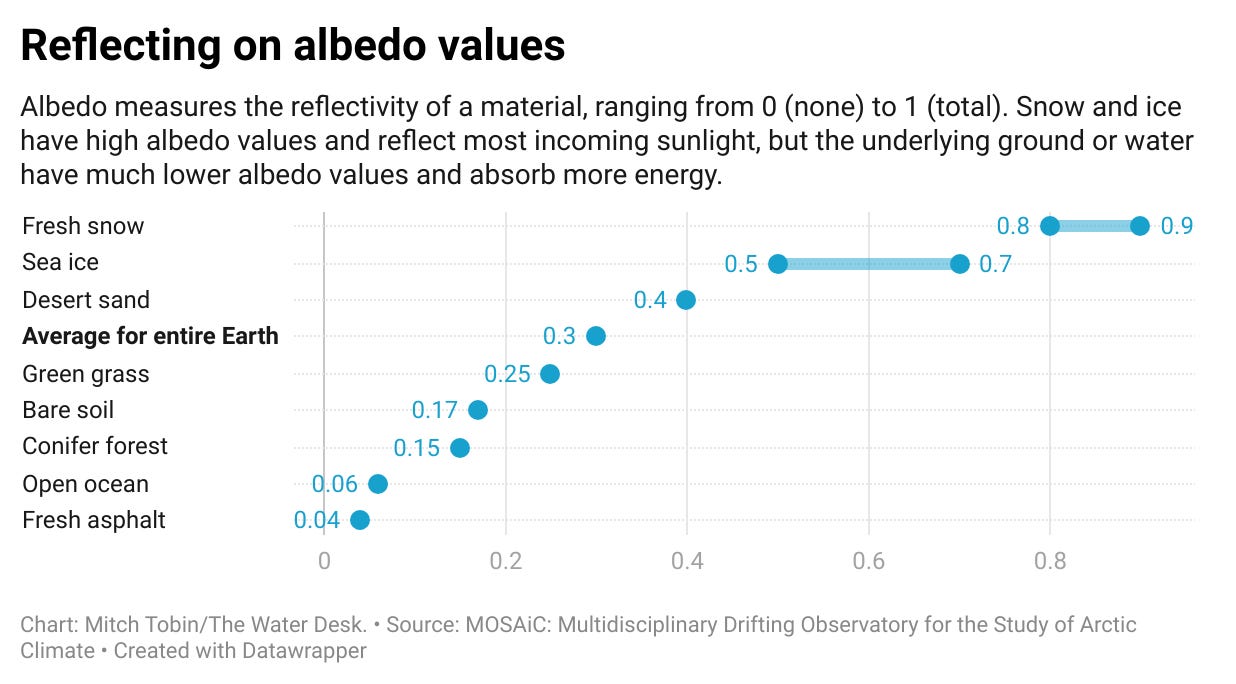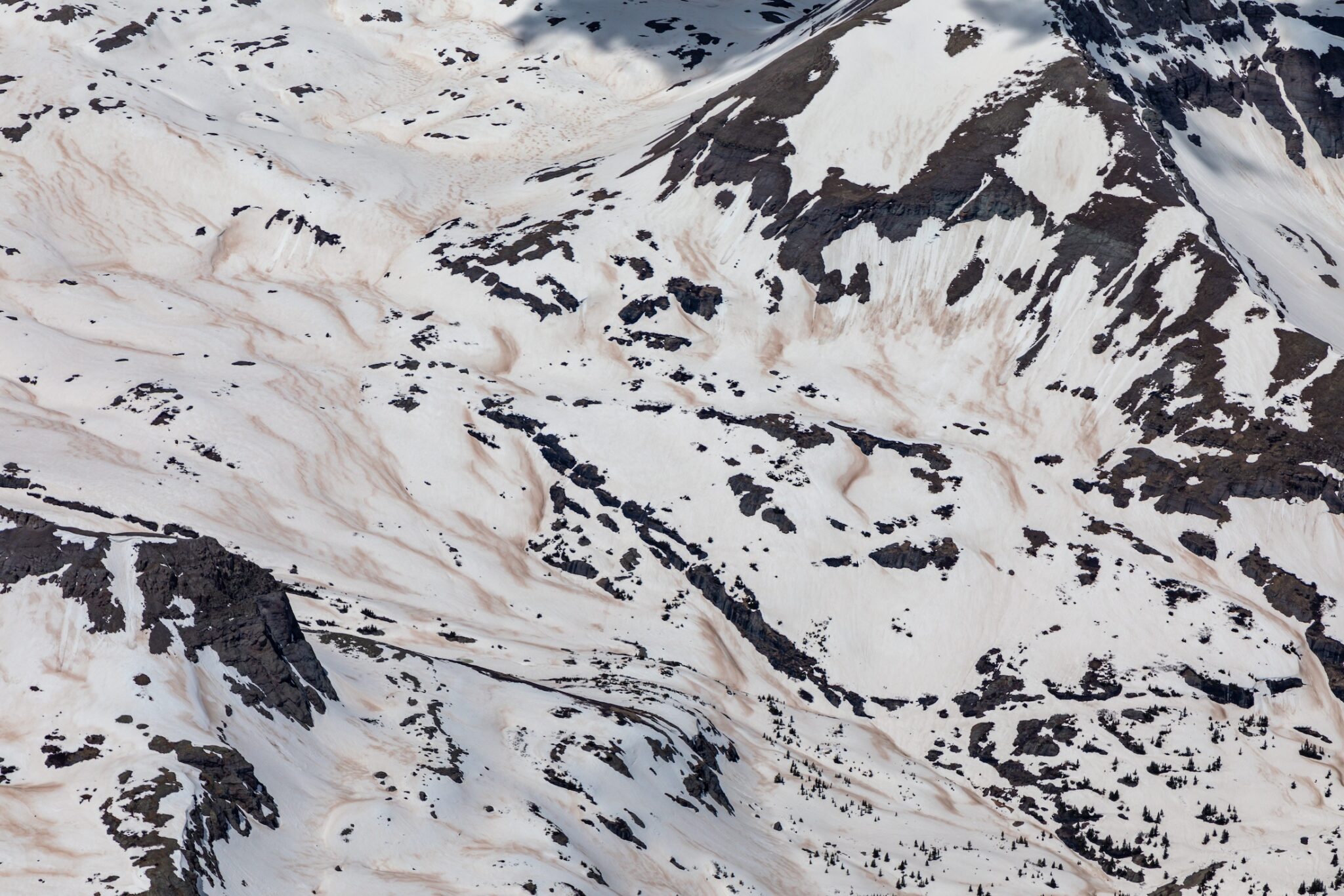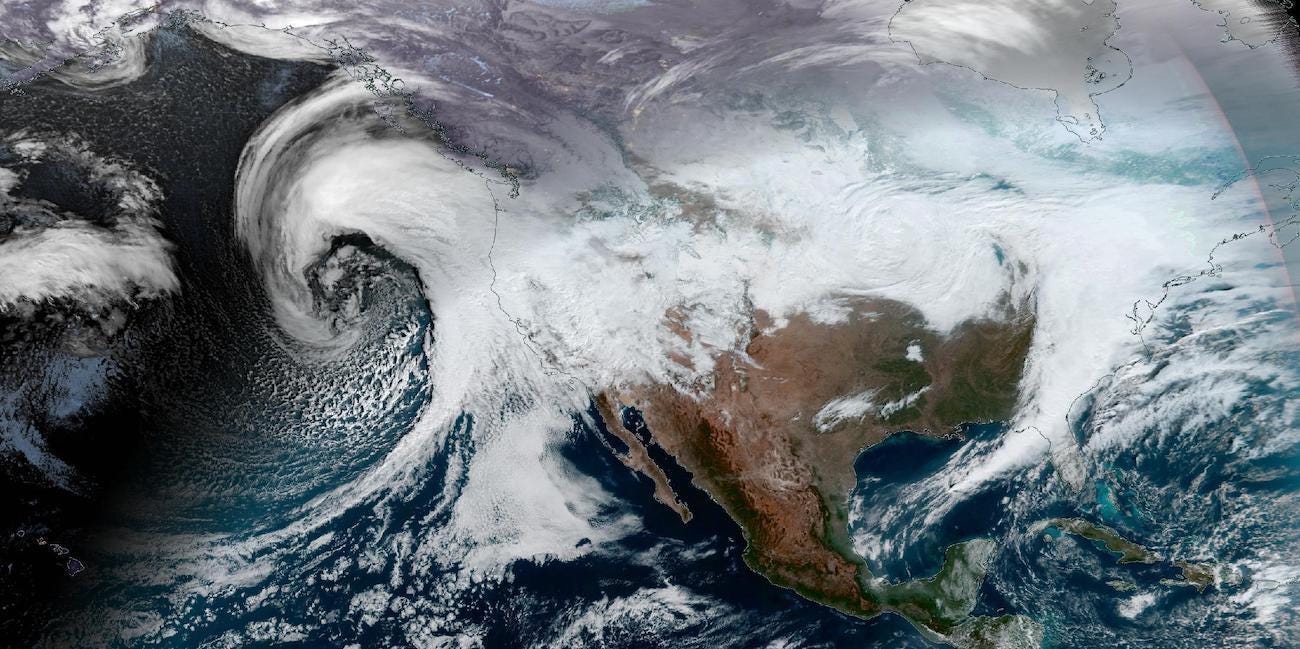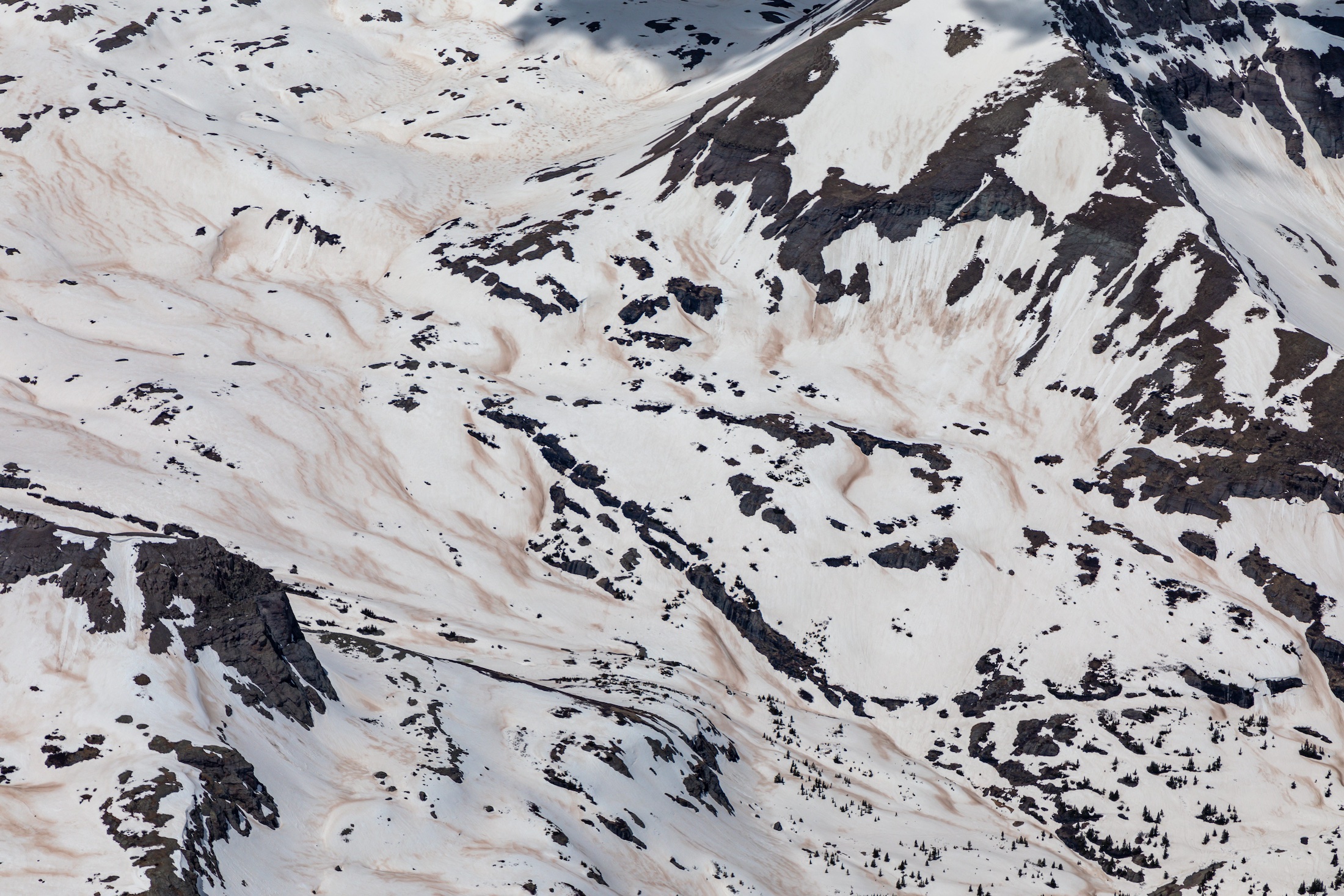Albedo is a measure of the fraction of solar energy that is reflected from a surface. It ranges from 0 to 1. Surfaces with very high albedo, such as snow and ice, reflect a large fraction of incoming sunlight, while those with low albedo, such as bare ground or open water, absorb most of the energy. Albedo is derived from the Latin word for white, albus.
The Earth’s overall albedo is 0.3, but fresh snow can be around 0.9, which is why you can get a nasty sunburn on the slopes in winter. The albedo values of various other materials are in the graphic below that I created using data from MOSAiC: Multidisciplinary Drifting Observatory for the Study of Arctic Climate.


(If you’d like to see a slightly different take, using data from Penn State, I made an alternate version of the chart here.)
Dust-on-snow events can dramatically decrease the albedo of the snowpack and hasten its melting. So can the deposition of charred material from forests scorched by wildfires.
On a global scale, albedo plays an important role in climate regulation. The less ice there is on the planet, the more solar radiation is absorbed, leading to further warming. Conversely, an increasingly frosty planet reflects more and more sunlight, cooling the planet further, freezing more ice, and so on, which is what happened to the planet when it turned into “Snowball Earth” many hundreds of millions of years ago.




